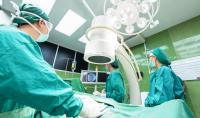How can patients be protected from hypothermia during surgery?
Setting the temperature in the operating room is quite a challenge. The patient requires a lot of heat, while the cooler temperature is better for the medical staff. WUT researchers decided to look for a solution to this problem. What is their idea? Prof. Anna Bogdan from the Faculty of Building Services, Hydro and Environmental Engineering explains.
Hypothermia is typically associated with extremely cold temperatures, such as those seen in high mountains. However, it is not limited to such extreme conditions.
Hypothermia in the operating room
– Hypothermia can also occur in the operating room, which applies to up to 70-90% of operations – says prof. Anna Bogdan.
It may seem horrific, but the causes are quite... mundane. These include a lack of food (which is required before many surgeries), a lack of mobility (which is understandable during a hospital stay), a lack of clothing (an obvious issue), and the use of anesthesia (depriving the body of the possibility of protection against heat loss).
– Every unintended perioperative hypothermia leads to a worse prognosis – says prof. Bogdan – We must not let the patient get too cold. Research shows that this causes wounds to heal worse, it increases the risk of infection, and even, as I have read somewhere, prolongs the recovery process.
This, however, is where the problem starts. Because, certainly, the patient requires a high temperature in the operating room. Yet, for doctors, it is difficult to work in such conditions.
The golden mean
How can the needs of both the patient and medical personnel be met without overburdening the budget?
– We have proposed the use of radiators to keep the patient warm during a surgery – explains prof. Bogdan. – We emphasized that they are affordable, widely available, and do not require sterilization after each patient (...) We want to direct the heat flow so that it only reaches the patient. (...) We bought radiators available on the market. By adjusting the size of the lampshade, you can regulate (...) the stream (...) We conducted a series of tests with various settings to see how we (...) affected medical personnel.
This is only the beginning of the research. However, the idea has already met with a positive response from anesthesiologists (they are responsible for the patient's body temperature) and nurses, who work in the operating rooms.
The project "Prevention of unintended perioperative hypothermia of patients" is financed under the program "Excellence Initiative – Research University" implemented at the Warsaw University of Technology. The idea has received support in the BEYOND POB competition.
More about the IDUB project at WUT on excellence.pw.edu.pl








